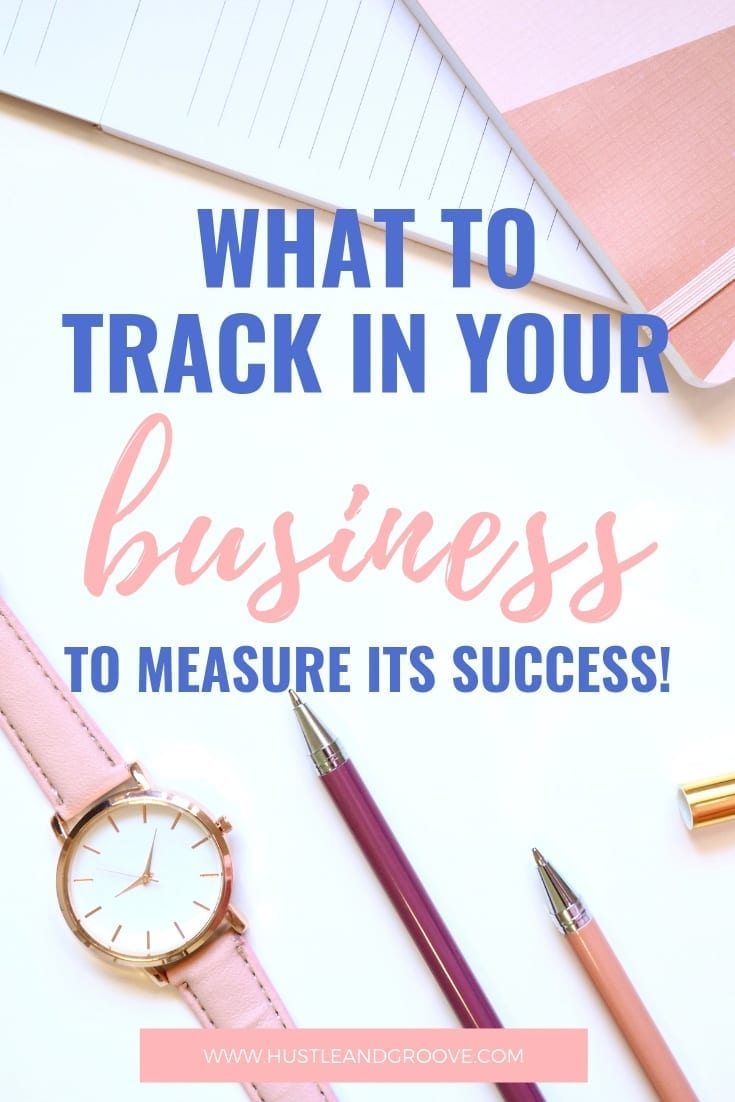Do you know what to track in your side hustle? Success goes beyond the profit and loss statement. The numbers you need to track might not be what you think.
A question I get asked a lot is, “How do I know when my side hustle is successful? What should I be tracking in my side hustle?”
That’s what I wanna address today, because if you’re not tracking this stuff, how can you measure when your business is truly a success? We wanna make sure that your business is successful! Stick with me, we’re going to dive into a couple of different things because this varies slightly beyond what you might think you should be tracking.
Table of Contents
Stop! Do You Have a Business?!?
If you haven’t started earning any money–STOP!–go ahead and check out this post and video where I talk about how to find your first client. You need to do that first. Otherwise, you don’t actually have a business. As I’ve said before,
…if you aren’t making money, you don’t have a business
Do that first. Go ahead and watch that. Bookmark this blog post and you can come back to it later, once you’ve started making sales or secured your first few clients.
Otherwise, if you are making money, stick with me and let’s figure out how you’re going to track your business for success.
What to Track in Your Side Hustle
#1: Income
The first thing that you wanna be tracking is your income. How do you know if your side hustle is profitable if you’re not tracking the income?
Now, there are some great programs that allow you to do this, like Freshbooks or Dubsado, but you could just start with an Excel spreadsheet. Super simple. All you have to do is track your income, either weekly, bimonthly, monthly, or whatever that looks like for you.
You need to track it so that you at least know what’s coming in.
#2: Expenses
The other thing that you wanna be tracking is your expenses or your outgoings.
What is it that you need to spend your money on to keep your business running?
Some of your expenses might be things like:
- hosting for your website
- the software programs that you need to be able to do your side hustle
- toner and paper for your printer
- your computer!
Whatever that looks like for your side hustle, write those down.
Again, you could just manage this in a spreadsheet, to begin with.
You could have a tab for income and a tab for expenses, and then at the end of each month, hopefully, your income exceeds your expenses.
Although, when you start a business, sometimes it’s quite common to operate at a loss. But you don’t want to do that for too long, so this is why you want to make sure that you’re keeping track of those two key numbers.
But those aren’t the only numbers you should track in your side hustle…
#3: Track Email Subscribers
You definitely want to make sure you’re tracking your email subscribers. Your email subscribers give you an indication on how successful your overall business is.
It is said that for every subscriber that you have on your list, they are worth one dollar to you. Obviously, the more subscribers you have, the more chances you have of making a consistent income on an ongoing basis.
If you haven’t started your email list, make sure you go and check out this video and blog post link where I talk about what that looks like.
Track email open rates
Now there are a couple of other, sort of sub-things that you want to track when it comes to your email subscribers. You want to also be tracking your open rates, or how many times someone opens your email when it’s sent out. You want to track that and you also want to track the click-through rate.
Why is this important to track? Because if you’ve gone to the trouble of building an email list, you want to make sure that your emails are getting read. If they’re not getting read, then no matter how many subscribers you have, it’s likely you’ll make zero dollars.
Open rates are important!
Track click-through rates
For every single email you send out there should be an opportunity for your reader to click something, often referred to as a call to action.
There should always be a clear call to action, even if that call to action is simply to connect with you on social media or something like that. It doesn’t have to be an upfront call to action, it just needs to be something for them to click, like in the post script (P.S.) area.
The click-through rate shows you how truly interested your subscribers are in the link you’re asking them to click. It aligns with the open rate and gives you an indication of how healthy your email list is.
With both those email list numbers, you can make decisions around whether you need to review your email subject lines (to get people to open your emails), whether you’re segmenting your list the right way, and whether your call to actions are clear.
Tracking these numbers allows you to pivot when needed.
Benchmark Rates
Now, here are some good industry averages that you want to be benchmarking against:
- For your email open rate, anything around 20% or higher is awesome. The more people that are opening your emails, the better chance you’ll have of being able to actually sell to them.
- For a click-through rate, the industry average is around 1.3% to 1.5%. If you’re averaging around that or higher, then you know that your email list is doing really well. That it’s healthy.
What do you do if your numbers aren’t in line with those averages? Then you’ll need to do a couple of things.
Clean your email list
Firstly, you’ll probably need to clean your email list. I would definitely recommend cleaning your list every 90 days. That is removing your cold subscribers, the people that aren’t opening or clicking your emails, from your main list or segments.
Just by doing that you should notice on the next email that you send out, your open and click-through rates will increase, because now you’re only talking to the people who want to be on your email list.
Make sure that this is something you incorporate into your ongoing routines. It’s part of my quarterly review process.
I know it hurts to have to delete some subscribers and watch your hard-won numbers go down. But an engaged list is more lucrative than inflated numbers.
You’re probably paying to send to those indifferent subscribers, so they’re actually costing you money. You only want people on your email list that you’re actually reaching.
Review email subject lines
Another thing to focus on is trying out different email subject lines. The best way to do this is by split testing. Most email platforms have this feature built into their broadcasts.
In ConvertKit, I can choose to split test two subject lines and then when the broadcast is sent out, ConvertKit sends it to 14% of my list and the email that gets opened the most is the subject line that wins. This subject line then goes out to the remaining list.
It’s a great way to see what your email list responds to because as great as your email content might be if your subject line isn’t strong enough, then it’s why your emails might not be getting opened.
Segment your list
The other thing you should ensure you’re doing to make your open and click-through rates better is to segment your list.
This is about creating smaller ‘lists’ within your email list where you only talk about a certain topic.
For example, inside my email list, I have four main segments:
- Side hustle
- Author
- Productivity
- Email marketing
This allows me to then only speak to my subscribers who are interested in author related information, or productivity. The more that you can identify segments within your own list, the better your open rates and click-through rates should become.
#4: Track Lead Magnet Conversions
The last piece of that is tracking your lead magnet conversions. These assets get people to join your email list.
Which lead magnets are doing better than others?
You should review your lead magnets around the same time that you’re reviewing your email list, so every 90 days.
Which ones are still converting really well and which ones aren’t?
For the ones that aren’t, you either remove, redo, or come up with something new. Eventually, you’ll land on about five to 10 lead magnets that you use across your entire site. These will be the lead magnets that consistently bring new subscribers onto your list.
All those data points mentioned above are the actual things that you want to be tracking in your business for success.
Those are the key metrics to track that make a difference and tell you how healthy your side hustle is.
But Wait, There’s More to Track!
Now, you could track more than this. You could track social media subscribers. You could also be tracking how many times a certain product or service converts. That really comes down to your own particular business and the metrics that matter to you the most.
Be mindful of putting too much weight on your social media numbers. Because you don’t have a way to speak to those subscribers without paying to do so. That is the biggest difference between having a large social media following and an engaged email list.
With your email list, you are getting into someone’s inbox with an email and you’re not having to pay to do that, aside from your email platform subscription.
Whereas on social media, it’s quite likely that you’re going to have to run Facebook ads, Instagram ads, or Pinterest ads to get in front of your reader, and then they still have to take action to join your email list.
Figure out what metrics matter for you from a business standpoint and track the things that actually inform you on what is making your side hustle successful.
What does that look like for your business?
Action Step
Your immediate action steps are to figure out the things that you need to track.
We’ve talked about income, expenses, email subscribers, open rates, click-through rates, and lead magnet conversion.
Are there any other pieces to that puzzle that you need to add in that really inform you as to how successful your side hustle is?
If you can think of anything else you need to track, pop a note in the comment section below.
As always, do what you love.
